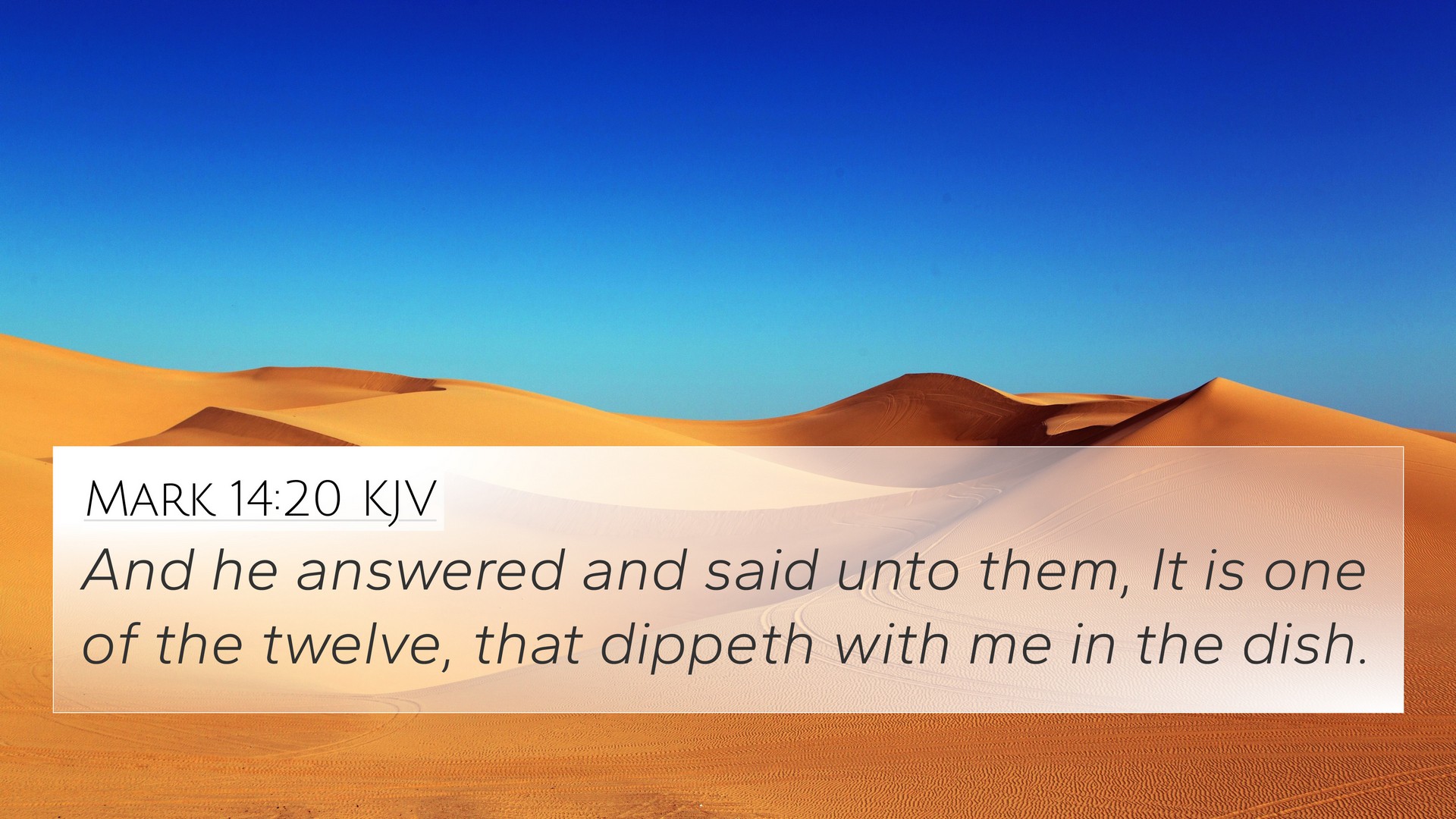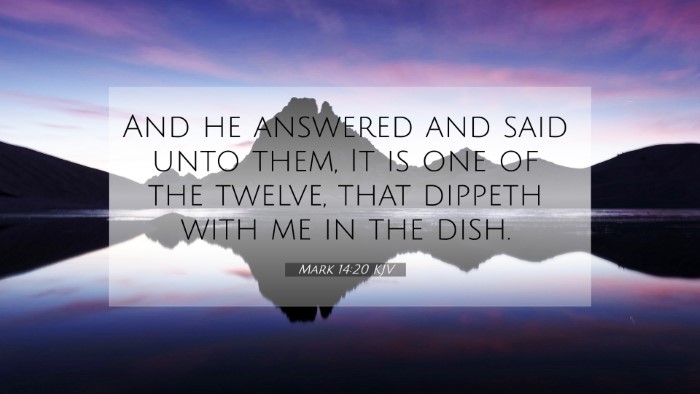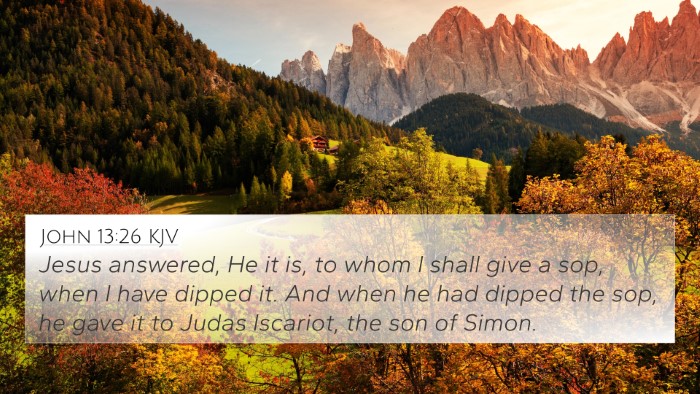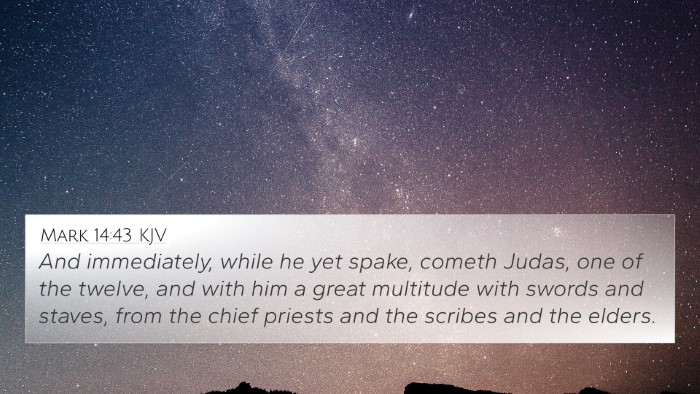Understanding Mark 14:20
Mark 14:20 states, "He said to them, 'It is one of the twelve, one who dips bread into the bowl with me.' This verse occurs during the Last Supper, where Jesus reveals that one of His disciples will betray Him. This deliberate act of dipping bread signifies betrayal and highlights the close bond shared with the one who commits the act.
Summary of Insights from Commentaries
Below is a synthesis of insights derived from notable public domain commentaries.
Matthew Henry's Commentary
Matthew Henry emphasizes that Jesus's identification of Judas Iscariot as the betrayer signifies the depth of the betrayal. The act of dipping bread was common in their culture, a mark of intimacy. Henry points out that the betrayal would come from someone who was physically close to Jesus, underscoring the painful nature of the act.
Albert Barnes' Commentary
Albert Barnes notes how this revelation reveals Jesus's omniscience, as He foresees the betrayal that will soon take place. He also highlights the emotional strain this prophecy would have placed on the disciples, who could not fathom that one of their own would commit such an act. This foreboding moment was foreshadowing the events leading to the crucifixion.
Adam Clarke's Commentary
Adam Clarke explains the cultural context of the act of dipping bread together and how it symbolizes camaraderie. He remarks that this moment serves to elucidate the magnitude of Judas's betrayal within the community of disciples. Clarke illustrates the stark contrast between the fellowship shared among the disciples and the treachery that one would choose to undertake.
Related Bible Cross-References
Mark 14:20 can be cross-referenced with the following verses, revealing thematic connections throughout the Scriptures:
- Psalm 41:9: This verse references a close friend who lifts a heel against the psalmist, paralleling Judas's action.
- Matthew 26:23: A direct account of the same moment where Jesus iterates that Judas is the betrayer.
- John 13:18: Here, Jesus explicitly states that He quotes Psalm 41:9 in indicating Judas's betrayal.
- Luke 22:21: Like Mark, Luke records that the betrayer is one among the twelve, reiterating Jesus's sorrow.
- Zechariah 11:12-13: Imagery of betrayal using thirty pieces of silver, foreshadowing Judas's price for betrayal.
- Matthew 27:3: Judas’s remorse and the consequences of his betrayal are captured after the act is completed.
- Acts 1:16-20: The aftermath of Judas's betrayal is discussed in the early church, highlighting its impact.
- Hebrews 6:4-6: This underscores the severity of turning away after having recognized the truth, akin to Judas's actions.
- 1 Corinthians 11:23-26: Explains the significance of the Lord's Supper, drawing connections to the Last Supper.
- Revelation 3:20: A call to intimacy, contrasting Judas's betrayal with Christ's open invitation to fellowship.
Thematic and Scriptural Connections
The betrayal of Jesus by Judas Iscariot raises numerous themes throughout the Bible, including treachery, prophecy, and the fulfillment of Scripture. This pivotal moment in the New Testament correlates deeply with Old Testament prophecies, especially in Psalms and Zechariah, providing rich material for thematic Bible verse connections.
Exploring Inter-Biblical Dialogue
When cross-referencing these verses, one can observe a dialogue between the Old and New Testament teachings. Recognizing the connections not only aids in understanding the narrative function of each verse but also in gleaning lessons about loyalty, friendship, and the implications of betrayal in a spiritual context.
To delve deeper into the meanings of Mark 14:20 and its context, utilize resources such as a Bible concordance, a Bible cross-reference guide, or utilize tools for Bible cross-referencing to draw parallels and compare biblical texts effectively.








